What is a Research Paper Problem Statement?
The research paper problem statement encapsulates the central point or challenge under investigation. It's a short and clear description of the specific issue being looked into.
This statement helps everyone, whether they're experts or not, understand what the research or the specific research paper is trying to solve.
The problem statement usually highlights:
- The background or context of the issue.
- The specific gap or challenge you're focusing on.
- The significance of addressing it.
What Does a Problem Statement Include?
A research paper problem statement includes key details that help define the focus and significance of the study. Here's what the problem statement should include:
- Background and Context – Explains the research topic and provides relevant background.
- Specific Problem – Clearly states the issue or gap in knowledge.
- Significance – Describes why the problem matters and its impact.
- Research Objective – Links the problem to the purpose of the study.
When to Write A Problem Statement
A problem statement serves different purposes depending on the context. In business, it’s usually the starting point for a project aimed at solving a specific issue, often presented as a stand-alone document.
On the other hand, in academic research, a problem statement helps define the research problem’s importance and provides context for the study. It can either be detailed in a research proposal or briefly included in the introduction of a paper. Here are some more contexts where the problem statement is necessary:
- Thesis or Dissertation
- Grant Proposals
- Case Studies
The format of a problem statement depends on whether the issue is practical (a real-world problem) or theoretical (focused on knowledge gaps). Regardless of the context, all problem statements follow a clear process: they describe the problem, explain its significance, and outline the need for addressing it.
How Do You Write a Good Problem Statement for a Research Project
To answer this question, follow the step by step approach given below, and you’ll be able to pen down strong problem statements in no time.
We’ve provided an example of a research problem statement that walks you through each step, making it easier to understand the process.
Step 1: Contextualize the Research Problem
Start by providing background information. Explain where, when, and how the problem occurs and identify who it affects. Mention any previous attempts to address the issue and their outcomes to give a well-rounded picture.
For Example:
In small suburban communities like Greenview, recycling participation rates have been steadily declining. Residents seem disengaged, and traditional recycling methods no longer resonate with the community. Past efforts, such as informational campaigns, have shown limited success, highlighting the need for a more tailored solution. |
Step 2: Highlight the Problem’s Significance
Clearly state why solving the problem is important. Explain what happens if the problem isn't addressed and who is most affected (stakeholders). Connect your problem to broader issues or similar situations in different places.
After contextualizing the problem and emphasizing its relevance, clearly state the gap in existing research or the lack of effective solutions. This highlights why your research is needed in the first place.
For Example:
Addressing the recycling problem is crucial for Greenview's environmental sustainability. Without a solution, the community faces increased waste, potential environmental harm, and a loss of community pride. This issue has wider relevance as it mirrors challenges in similar suburban areas nationwide. Despite numerous efforts, little research has focused on addressing the unique needs of suburban communities like Greenview, where traditional recycling campaigns have failed. |
Step 3: Set Aims and Objectives
Define the main goal (aim) of your research and outline specific objectives. These objectives act as actionable steps that guide your investigation and naturally lead to research questions.
For Example:
This research aims to improve recycling participation in Greenview by addressing local barriers. Specific objectives include:
- Conducting community surveys to identify recycling obstacles.
- Designing targeted awareness campaigns tailored to the community.
- Evaluating the effectiveness of these campaigns in improving recycling rates.
Step 4: Back Up Your Claims
Support your statements with evidence from credible sources. Conduct a literature review to provide background on the problem and highlight gaps in existing solutions. This step establishes the credibility and relevance of your research.
For Example:
Existing studies show that suburban recycling programs often fail due to generic campaigns that overlook local dynamics. Research from similar communities indicates that understanding community-specific challenges is crucial for designing effective interventions. This study builds on those findings to propose localized solutions for Greenview. |
Step 5: Propose Practical Solutions
Offer initial ideas for addressing the problem. While these don’t have to be definitive answers, they should show a clear direction for tackling the issue. Explain how these strategies address the root causes and potential benefits of their implementation.
For Example:
Proposed solutions include personalized educational campaigns based on survey results, community-specific recycling initiatives, and using social media for engagement. These strategies aim to minimize costs, increase recycling efficiency, and strengthen communal responsibility. |
By following these steps, you can create a strong problem statement that makes your research clear and effective.
Note: The name Greenview in the statement of problem example is a fictional name used to represent a suburban community.
Where Should You Place Your Research Paper Problem Statement?
Generally, it is common practice to place the problem statement in the research paper introduction. This allows readers to gain an understanding of the context and the specific problem being addressed early on in the document.
How long should a research problem statement be?
A research problem statement is typically one to two paragraphs long, ranging from 150 to 300 words. However, the length:
- Depends on the complexity of the problem.
- Depends on the type of research or the field of study
- Depends on the document it’s a part of (e.g., research proposal, thesis, or dissertation).
Problem Statement vs. Thesis Statement, What is the Difference?
Knowing the difference between a research problem statement and a thesis statement is important for anyone writing research papers. Now, let's take a closer look at how they're different by breaking it down simply.
Problem Statement | Thesis Statement |
Describes a specific issue or challenge | Presents the main argument or claim of the entire paper |
Identifies a problem that needs solving | States the position or standpoint of the author |
Typically found in the introduction | Often appears towards the end of the introduction |
Focuses on the problem to be addressed | Provides a concise summary of the paper's main point |
Guides the direction of the research | Guides the overall structure and purpose of the paper |
May not necessarily propose a solution | Does not always address a problem but asserts a position |
Common in research papers and projects | Common in essays, especially academic and persuasive ones |
How to Write a Research Paper Problem Statement - Examples
With the help of some great examples of problem statements, you’ll have an even better idea about how to write the ideal problem statement.
Below is a list of research problem statement examples we have crafted just for you.
Here’s another example of problem statement in research proposal:
Topic: Developing Sustainable Strategies for Urban Waste Management. Urbanization strains waste management, leading to environmental harm. This proposal targets inefficiencies, aiming to develop sustainable strategies for waste reduction and resource recovery. The significance lies in mitigating ecological impact and fostering sustainable urban development. Building on existing efforts, this research adopts a multidisciplinary approach to propose innovative solutions. The study acknowledges limitations but aims to provide transferable insights for diverse urban settings. In conclusion, the research contributes to the global sustainable development discourse. |
Statement of Problem Questions
There are some research questions that every researcher should answer in their problem statement:
- What is the main issue or challenge you aim to address?
- Why is this problem significant or important?
- Who is affected by this problem, and to what extent?
- What is the context surrounding this problem?
- What past efforts were made to solve this problem, and why didn't they fully work?
- How does the problem impact the current state of affairs or existing processes?
- What are the potential consequences if the problem is not addressed?
- How does this problem fit into the broader field of study or industry?
- What gaps in knowledge or understanding does this problem highlight?
- Are there any limitations or boundaries to consider in addressing this problem?
To sum it up, a well-defined problem statement is the driving force for your research paper. It outlines the main challenges that your study addresses.
Written with clarity, it assures accessibility to a wide audience, emphasizes the relevance and significance of your work, and sets the stage for clear research objectives.
With the comprehensive writing steps mentioned in this guide, we’re sure that you’re now capable of crafting your problem statement with a sincere effort.
However, getting professional assistance is a great option as the margin of error in research paper writing is very small. Let SharkPapers.com help you with research paper writing. You can purchase graduate, undergraduate, or buy college research papers from us at reasonable prices!
Our skilled academic writers are capable of taking on any academic writing tasks. Just hire paper writing service, tell us what you require, and we’ll help you out at affordable rates!
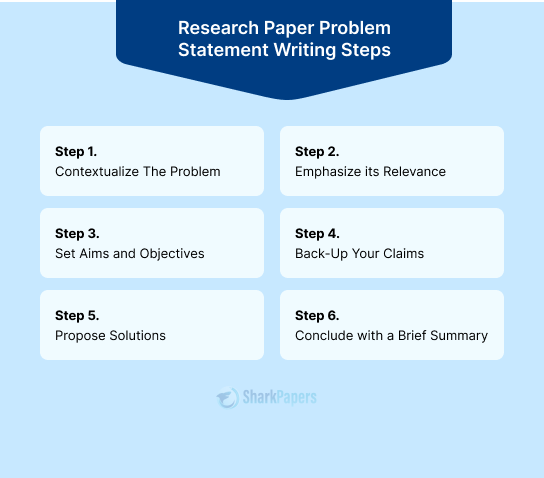










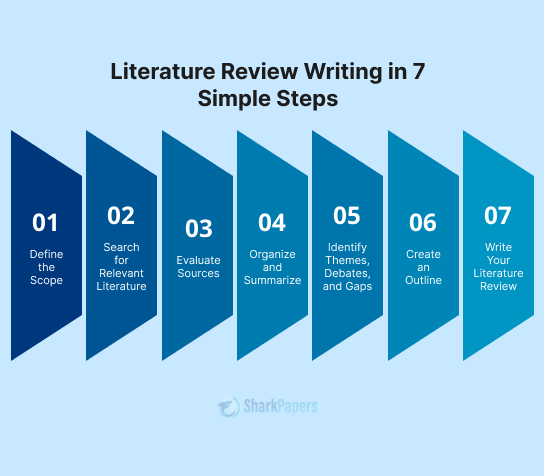





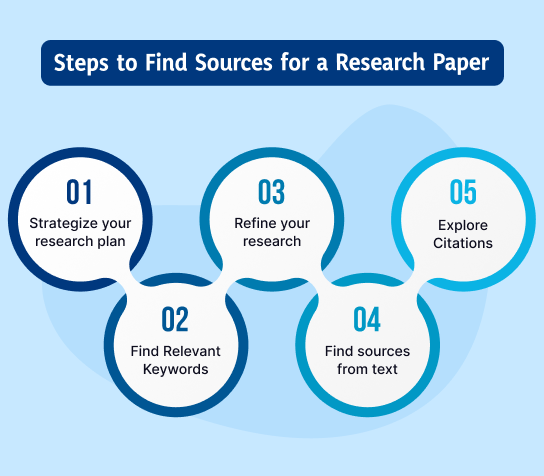
)










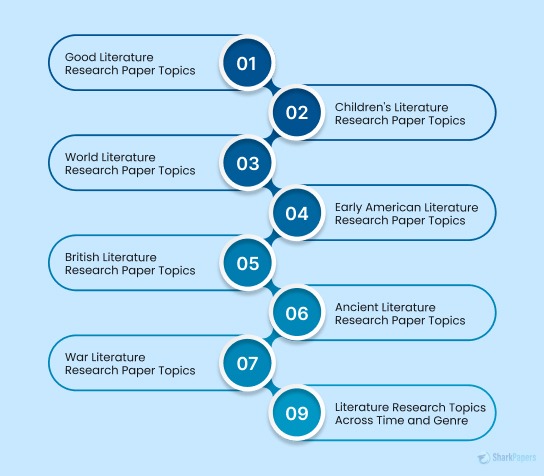




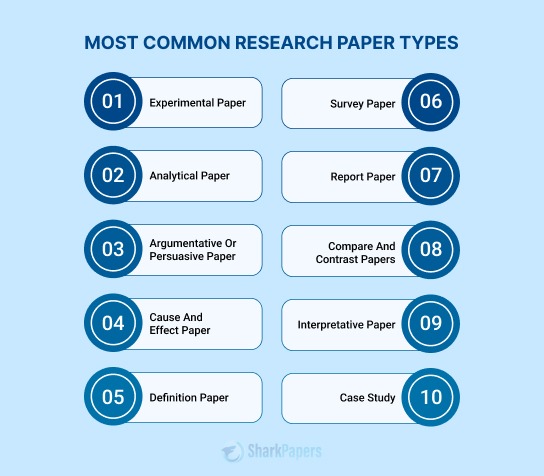

















-12114.jpg)














 Not seeing it? Check Promotions or Spam — inboxes get protective.
Not seeing it? Check Promotions or Spam — inboxes get protective.